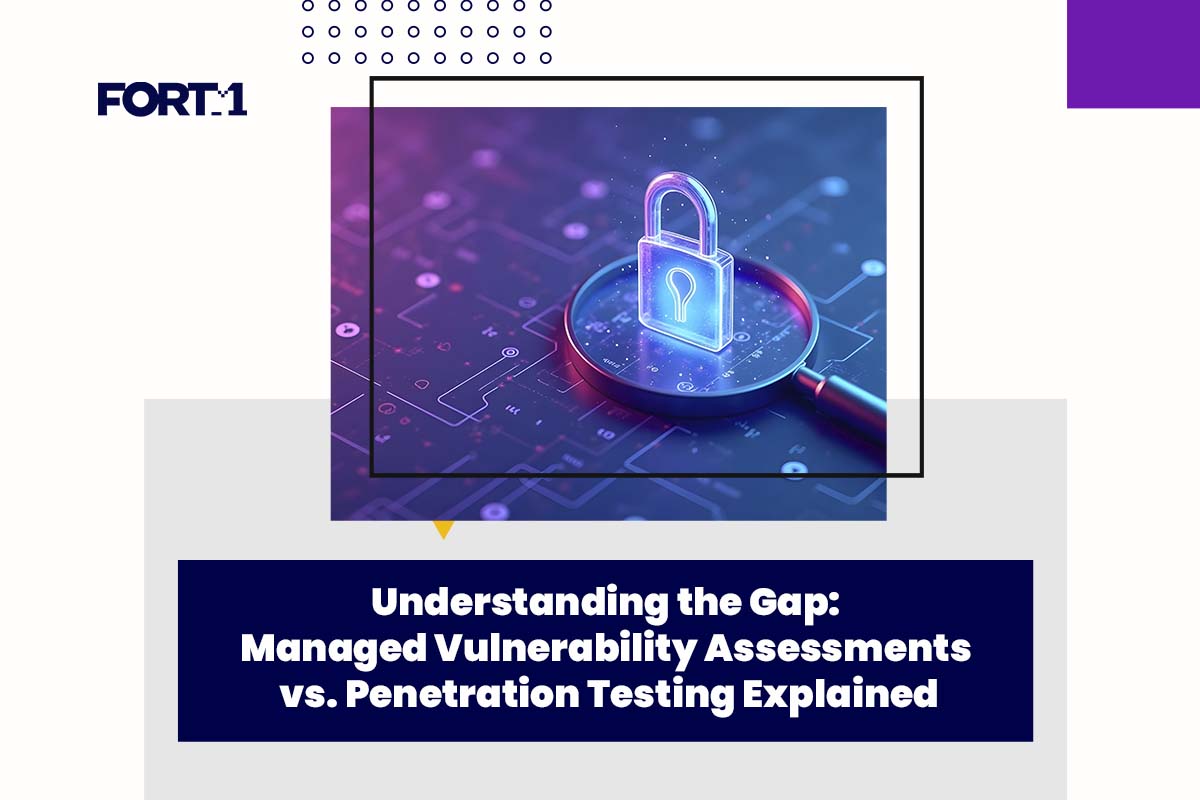




Cybersecurity breaches continue to pose a critical threat to businesses, with data breaches costing Australian organisations an average of $4.03 million per incident in 2023, according to IBM’s Cost of a Data Breach Report. To mitigate these risks, organisations employ structured security testing methods, including Managed Vulnerability Assessments (VA) and Penetration Testing (Pen Testing), each serving distinct purposes.
Managed Vulnerability Assessments involve continuous, automated scanning to detect known vulnerabilities in systems and applications. This approach helps organisations identify and prioritise security gaps before they are exploited. In contrast, Penetration Testing is a manual, adversary-simulated assessment where ethical hackers attempt to exploit vulnerabilities to determine real-world risks.
This article examines the methodologies, tools, and objectives of these two cybersecurity testing approaches. Understanding their differences will help organisations choose the most effective strategy for improving their security posture and ensuring compliance with regulatory frameworks.
Managed Vulnerability Assessment (VA) is a proactive security practice that continuously scans an organisation’s IT infrastructure for known vulnerabilities. Unlike penetration testing, which simulates attacks, Managed VA focuses on systematic identification and prioritisation of security weaknesses before they are exploited. This method aligns with cybersecurity best practices, helping organisations mitigate risks and maintain compliance with industry standards such as ISO 27001 and NIST 800-40.
Managed VA relies on automated scanning and continuous monitoring to detect software misconfigurations, outdated applications, and unpatched vulnerabilities. The process follows a structured approach:
Organisations typically use industry-leading tools such as:
A well-managed VA program provides:
Managed VA is best suited for organisations that require:
The following diagram illustrates the Managed VA lifecycle, from initial discovery to remediation:

Penetration testing, commonly referred to as Pen Testing, is a manual security assessment that simulates real-world cyberattacks to identify exploitable vulnerabilities in an organisation’s network, applications, and infrastructure. Unlike Managed Vulnerability Assessments (VA), which focus on identifying known security weaknesses through automated scanning, Pen Testing actively exploits vulnerabilities to assess their actual impact. This method goes beyond detection, providing businesses with a realistic evaluation of their security posture.
Penetration testing follows a structured process based on ethical hacking principles:
Pen Testers leverage various tools to conduct assessments, including:
Pen Testing provides organisations with:
Penetration testing is most suitable when:
The following flowchart illustrates the Pen Testing process, from reconnaissance to reporting:

Selecting the appropriate cybersecurity assessment method requires a clear understanding of Managed Vulnerability Assessments (VA) and Penetration Testing (Pen Testing). While both aim to enhance security, they differ significantly in approach, depth, tools, reporting, and cost.
Managed VA relies on automated scanning tools to detect known vulnerabilities, making it efficient for continuous monitoring. In contrast, Penetration Testing is a manual process, where ethical hackers simulate real-world attacks to exploit weaknesses.
Managed VA provides a broad but shallow assessment by identifying vulnerabilities across an organisation’s IT infrastructure. However, it does not determine whether those vulnerabilities can be actively exploited. Pen Testing goes deeper, attempting to exploit security gaps to assess real-world risks.
Managed VA generates automated reports listing identified vulnerabilities with severity ratings. These reports assist IT teams in prioritising remediation. Pen Testing reports, however, provide detailed exploitation evidence, demonstrating how vulnerabilities can be leveraged by attackers.
Managed VA is cost-effective and can be conducted frequently (e.g., weekly or monthly). Pen Testing, being resource-intensive, is recommended annually or biannually for critical systems.
The table below highlights the core differences between Managed Vulnerability Assessments and Penetration Testing.
| Aspect | Managed Vulnerability Assessment (VA) | Penetration Testing |
|---|---|---|
| Approach | Automated vulnerability scanning | Manual testing and exploitation |
| Depth of Testing | Identifies known vulnerabilities | Exploits vulnerabilities to assess real risks |
| Tools Used | Nessus, Qualys, Rapid7 | Metasploit, Burp Suite, Wireshark |
| Reporting | Automated reports with risk severity | Detailed reports with attack scenarios |
| Remediation | Prioritisation of security patches | Demonstrates exploitability for stronger defences |
| Cost | Lower cost due to automation | Higher cost due to manual testing |
| Recommended Frequency | Weekly, monthly, or quarterly | Annually or biannually |
Selecting between Managed Vulnerability Assessments (VA) and Penetration Testing (Pen Testing) depends on an organisation’s security requirements, risk tolerance, and regulatory obligations. In many cases, a combination of both methods provides the most comprehensive security posture.
Organisations that must meet regulatory requirements or maintain continuous security monitoring benefit from Managed VA. Industry frameworks such as ISO 27001 and NIST 800-53 recommend ongoing vulnerability management to detect and remediate security flaws before exploitation occurs. Managed VA is particularly effective for:
Penetration Testing is the preferred choice for organisations looking to assess real-world risks. It is particularly valuable for:
Many organisations integrate both methods—using Managed VA for continuous monitoring and Pen Testing periodically to validate security defences. This approach ensures that security vulnerabilities are both detected early and assessed for exploitability.
The following decision tree helps organisations determine the best approach based on their security needs.
This structured decision tree provides a clear path for businesses evaluating Managed VA vs. Pen Testing, ensuring they make informed security investments.
Effective cybersecurity testing requires a strategic balance between Managed Vulnerability Assessments (VA) and Penetration Testing. While Managed VA provides continuous identification of known security weaknesses, Pen Testing offers an in-depth analysis of how vulnerabilities can be exploited in real-world attacks. Both methods are essential for a comprehensive security strategy.
Organisations must evaluate their risk exposure, compliance requirements, and security goals when selecting the appropriate approach. Businesses handling sensitive data or operating in regulated industries benefit from ongoing vulnerability assessments. Meanwhile, organisations looking to validate security defences against realistic cyber threats should invest in regular Pen Testing.
For a robust cybersecurity strategy, many organisations adopt a hybrid approach, leveraging both methods to detect, assess, and mitigate risks proactively.
Need expert guidance on securing your business? Fort1 provides tailored cybersecurity solutions, including Managed VA and Pen Testing. Contact us today to strengthen your organisation’s security posture: Visit Fort1.

Fort1 provides comprehensive cybersecurity solutions tailored to protect your business from evolving digital threats. With expertise in penetration testing, dark web monitoring, and managed detection services, we empower organisations to stay secure and resilient in the face of modern cyber challenges.
Copyright @2024 Fort1. All Rights Reserved by Fort1.